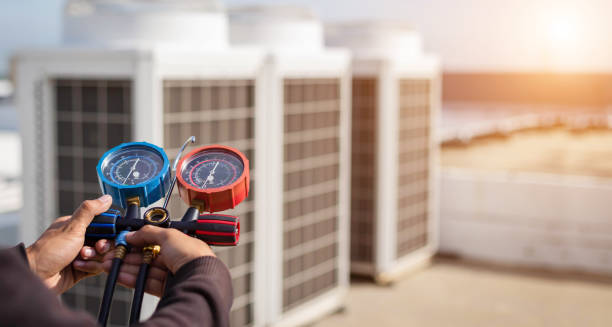Installing a cooling system is basic for keeping up ideal temperatures in different situations, whether for domestic consolation, server rooms, or mechanical settings. This step-by-step guide will walk you through the process of cooling system installations in Clifton NJ effectively and safely.
Step 1: Survey Necessities and Plan
Assessment:
- Determine the cooling capacity required based on the measure of the space and warm stack produced by the equipment.
- Choose the sort of cooling system (e.g., a conditioning unit, an evaporative cooler, or a refrigeration system) appropriate for your needs and environment.
Planning:
- Select a fitting area for the cooling unit, considering components such as wind current, availability for upkeep, and proximity to control sources and drainage.
- Ensure adequate clearance around the unit for wind current and support purposes.
Step 2: Accumulate Devices and Materials
Tools:
- Screwdrivers
- Wrenches
- Level
- Tape measure
- Drills and bits
- Pipe cutter (in the event that it is applicable)
Materials:
- Cooling unit (AC unit, evaporative cooler, etc.)
- Mounting brackets or stands
- Ductwork (on the off chance that it is needed)
- Insulation materials (froth or rubber)
- Refrigerant (for refrigeration systems)
Step 3: Introduce Mounting Brackets or Stands
- Follow producer instructions to safely mount brackets or stands to back the cooling unit.
- Ensure brackets or stands are level and tied to a steady surface to avoid vibration and movement.
Step 4: Position and Secure the Cooling Unit
- Carefully position the cooling unit on the mounting brackets or stands.
- Use a level to guarantee the unit is impeccably safe, even to encourage legitimate seepage and operation.
Step 5: Interface Electrical Wiring
- Turn off the control supply to dodge electrical hazards.
- Follow the manufacturer’s instructions to interface electrical wiring from the cooling unit to the control source.
- Double-check associations and guarantee wiring is secured and protected to avoid damage.
Step 6: Install Ductwork
- If your cooling system requires ductwork to discuss dispersion, collect and introduce channels according to producer specifications.
- Seal joints and associations with channel tape or suitable sealants to anticipate and discuss leaks.
Step 7: Interface Waste System
- Ensure appropriate waste is put to channel condensate or abundance water absent from the cooling unit.
- Use a level to make a slight incline towards the waste outlet to encourage productive water flow.
Step 8: Test and Commission the Cooling System
- Turn on the control supply and actuate the cooling unit according to the manufacturer’s guidelines.
- Monitor the system for any unordinary commotions, vibrations, or leaks.
- Check the wind stream and temperature yield to guarantee the system is working correctly.
Step 9: Alter and fine-tune
- Make any essential alterations to the wind current heading or temperature settings to achieve ideal cooling performance.
- Conduct a last review to guarantee all associations are secure and components are working as expected.
Step 10: Upkeep and Operation Guidelines
- Follow the manufacturer’s suggestions for standard support, including counting cleaning channels, checking refrigerant levels (if appropriate), and reviewing ductwork.
- Keep records of support exercises and plan intermittent reviews to amplify the life expectancy of your cooling system.
Conclusion
By following these step-by-step enlightening steps, you can effectively install a cooling system custom-made to your particular needs. Whether you’re cooling a little room or a bigger mechanical space, an appropriate establishment guarantees proficient operation and the life span of your gear. Continuously prioritize security and counsel proficiently, offering assistance if required for complex establishments.
